Gloucestershire
Explore hidden histories, historic photos, and things you never knew about Gloucestershire from the collections and archives of Historic England.
Discover your local listed buildings and places
Introducing some of Gloucestershire's most historic sites, included in the National Heritage List for England. Some of these captions have been summarised by AI. Click through for the official List entry. Skip this section and go to place by numbers
ADLESTROP PARK and HOUSE
Adlestrop
Adlestrop Park and House, historically owned by the Leigh family, feature Repton-designed landscapes. Jane Austen visited often, inspiring elements in her works.
Spring Hill House
Blockley
Spring Hill House is an 18th-century retreat designed by Lancelot Brown for Earl Coventry, with additions by General Lygon, featuring gardens and a park.
Cowley Manor
Coberley
Cowley Manor, rebuilt in Italianate style around 1855-60 by James Hutchinson, features mid to late 19th-century landscape design with lakes.
Dodington House
Dodington
Dodington House, built in the early 19th century by James Wyatt, features stunning landscapes designed by Capability Brown and others.
Dowdeswell Court
Dowdeswell
Dowdeswell Court, rebuilt in the 1830s on a 17th-century site by Rowland Paul, features landscaped grounds and historical significance with connections to the Rogers family since 1582.
Medieval fishponds 125m south of Park Farm, Thornbury
Thornbury
A group of eight fishponds 125m south of Park Farm, Thornbury. Read the official list entry to find out more.
Chedworth Roman villa
Chedworth
Chedworth Roman villa in Chedworth Woods is a major Romano-British rural estate featuring luxurious mosaics, bath suites, and evidence of Romanised British society.
Bradley Court
Wotton-under-Edge
Bradley Court, a Grade II* listed 16th-century manor house, features compartmentalized gardens from circa 1700 and a summerhouse built in 1702 by Thomas Dawes.
Eyford Park
Upper Slaughter
Eyford Park, historically owned by notable figures, features a 1910 Queen Anne-style house by Sir Guy Dawber and landscaped gardens and parklands dating back to the late 17th century.
Cirencester Park
Cirencester
Cirencester Park, developed from 1714, is a historic wooded park influenced by Allen, first Earl Bathurst, with input from Alexander Pope. It remains in private ownership.
Kemble House, gatepiers, boundary walls, outbuildings and…
Kemble and Ewen
A large, detached house dating originally from the C17, probably built for Henry Poole (1564-1632).
Hatherop Castle
Hatherop
Hatherop Castle, originating from the 16th and 17th centuries, underwent extensive restoration in the mid-19th century. It houses formal gardens, park, and a historical Italian Garden.
Abbotswood
Stow-on-the-Wold
Formal gardens by Edwin Lutyens and Mark Fenwick adjoining a C19 country house remodelled by Lutyens in 1901-1902, with other C19 and C20 gardens and parkland, and an earlier landscape park...
Painswick House
Painswick
Painswick House features a 1730s rococo landscape garden designed by Thomas Robins, with historical connections to Charles Hyett and elaborate structures like the Eagle House and Exedra.
Tortworth Court
Cromhall
Tortworth Court, built between 1849-53 by S.S. Teulon for the Earl of Ducie, features a historic park, arboretum, and gardens. It is now a hotel, converted in early 2000s.
Sherborne House
Sherborne
Sherborne House and its grounds have historical significance dating back to the 16th century, featuring extensive gardens, pleasure grounds, and a landscape park associated with a country...
Barnsley House
Barnsley
Barnsley House features a mid-20th century garden by Rosemary Verey, integrating 18th and 19th-century elements, showcasing formal and informal design elements.
Estcourt Park
Long Newnton
Estcourt Park evolved from late 18th to mid-19th century around a country house, later demolished. Notable figures like William Andrews Nesfield contributed to its landscape design.
Batsford Park
Batsford
Batsford Park, established in the late 18th century, showcases oriental-influenced gardens and significant arboretum, enhanced in the 1890s by Algernon Bertram Freeman-Mitford.
Stoke Park
Stoke Park and Cheswick
Stoke Park, developed by Thomas Wright in the 18th century, is a historically significant landscape surrounding a country house, now restored for public use and housing.
Healings Flour Mill and Warehouses
Tewkesbury
A flour mill of 1865 with warehouses of 1870s and 1880s dates. Read the official list entry to find out more.
Stowell Park
Yanworth
Stowell Park, a historic estate, features a late 19th-century garden by Sir John Belcher. Significant figures include Robert Atkinson and William Scott during its development.
Notgrove Manor
Notgrove
Notgrove Manor, historically linked to bishops of Worcester and prominent families, features 20th-century gardens and park around a C15-C18 Cotswold manor, rich in historical transitions.
Coberley long barrow
Coberley
A Neolithic funerary monument dating to 3800 - 2400 BC. Read the official list entry to find out more.
Romano-British villa at Withington, Romano-British buildi…
Withington
Two Romano-British building complexes with associated field boundaries and trackways situated on a limestone plateau, surviving as buried masonry and features.
Battle of Tewkesbury 1471
Tewkesbury
The site of the Battle of Tewkesbury 1471 which ended the second phase of the Wars of the Roses and saw the position of Edward IV on the English throne secured.
Warmley House
Oldland
Warmley House, built in 1750 for William Champion, features grounds originally linked to his brassworks and industrial processes, and includes listed gardens and unique grottoes.
Toddington Manor
Toddington
Toddington Manor, designed by Charles Hanbury-Tracy in the 19th century, is a Gothic-style mansion with extensive historic and architectural significance in Gloucestershire.
Painswick Hill (or Kimsbury) camp
Painswick
Large multivallate hillforts are rare and important for understanding Iron Age social organisation. The site near Lyncombe Farm survives well despite quarrying and landscaping.
The Toots long barrow, Selsley Common
King's Stanley
Long barrows like 'The Toots' on Selsley Common were Neolithic funerary monuments and are vital due to their rarity, age, and role in prehistoric rituals.
Cheltenham Minster (St Mary's)
Cheltenham
Minster church, formerly parish church, of mid-C12 origins, with mid-C13 lower stage to tower, with C14 rebuilding, enlargement and spire.
Roman Catholic Church of Our Lady and St Therese
Painswick
A Roman Catholic church, formerly four cottages of the C16, later a slaughterhouse, converted to a place of worship in 1934, remodelled in classical style by Ellery Anderson Roiser and...
Roman Catholic Church of Our Lady of the Annunciation, bo…
Woodchester
A Roman Catholic parish church, built in 1846-9 to designs by Charles Hansom as a Dominican priory church, endowed by William Leigh; with associated boundary walls and railings.
Ablington camp
Bibury
Slight univallate hillforts date from the Late Bronze Age to the Early Iron Age, serving as stock enclosures, settlements, or refuges. They are rare and significant for historical insights.
210, 220, 240, 250, 260 and 290 Park Avenue
Patchway
Speculative offices, built between 1987 and 1988 in two phases, designed by Campbell Zogolovitch Wilkinson and Gough (CZWG) for the Aztec West business park.
Church of St Michael and All Angels
Stanton
The Church of St Michael and All Angels features architecture from the 12th to 20th centuries, with prominent additions by Blomfield and Comper, showcasing medieval and later elements.
Church of St Laurence
Stroud
14th century tower and spire, the rest rebuilt in new forms by Wilson & Willcox of Bath,1866-8. Read the official list entry to find out more.
Explore more
Search for more listed placesGloucestershire through time
This timeline shows the first period of use for buildings and places on the National Heritage List for England, just one of the details recorded for every list entry. Click around to see how Gloucestershire changes over time. Skip this section and go to aerial photos
Prehistoric Before AD 43
Prehistory covers a million years of human occupation before the Roman invasion and the introduction of writing. Primarily hunter-gatherers of several human species including Neanderthals, the peoples moved across Europe, hunting animals, exchanging ideas and developing complex culture and belief systems including burial rites and astronomical understanding, as at Stonehenge for example.
Roman AD 43 to AD 410
Britain was invaded by four legions of the Roman army in AD 43, who relatively rapidly conquered England from landing points in Kent. Parts of Wales and Scotland soon followed.
Roman culture brought urbanism, monumental buildings, wide-ranging religious beliefs, writing, and strong social hierarchy. The Roman administrative system was withdrawn in AD 410.
Early medieval AD 410 to AD 1066
This period, often associated in England with Anglo-Saxons and Vikings, saw a reduction in urban living from the Roman period and increased migration from northern Europe.
Traces of this period can be found in cemeteries, particularly in artefacts and in some of the very early churches, as this period also saw the growth of Christianity in Britain.
Medieval AD 1066 to AD 1540
This period, sometimes known as the Middle Ages, began with the Norman invasion in AD 1066. It saw a significant rise in military and defensive buildings such as castles and earthworks, as well as religious houses dominating a largely agricultural landscape.
The monarchy and Church dominated the period, which also saw the break with the Roman Catholic Church and the English reformation.
Post medieval AD 1540 to AD 1901
The Post-Medieval period brought seismic changes to life in England, with religious reformation leading to the democratization of worship and the destruction of hundreds of religious houses.
In parallel, there was a huge expansion of scientific study and enlightenment that permanently altered the nation's social structure and landscape. Industrialization and mass production lead to wider global trade, emigration, and immigration.
20th century AD 1901 to AD 2000
The 20th century saw an incredible expansion of England's transport networks, with suburban growth shadowing rapid infrastructural expansion. The establishment of state schools, hospitals, and modern technical colleges, with new architectural styles, radically changed the appearance of towns and cities.
Two catastrophic world wars and the 1918 pandemic also brought unprecedented change, altering England's built environment and social structures forever.
Prehistoric Before AD 43
Prehistory covers a million years of human occupation before the Roman invasion and the introduction of writing. Primarily hunter-gatherers of several human species including Neanderthals, the peoples moved across Europe, hunting animals, exchanging ideas and developing complex culture and belief systems including burial rites and astronomical understanding, as at Stonehenge for example.
Roman AD 43 to AD 410
Britain was invaded by four legions of the Roman army in AD 43, who relatively rapidly conquered England from landing points in Kent. Parts of Wales and Scotland soon followed.
Roman culture brought urbanism, monumental buildings, wide-ranging religious beliefs, writing, and strong social hierarchy. The Roman administrative system was withdrawn in AD 410.
Early medieval AD 410 to AD 1066
This period, often associated in England with Anglo-Saxons and Vikings, saw a reduction in urban living from the Roman period and increased migration from northern Europe.
Traces of this period can be found in cemeteries, particularly in artefacts and in some of the very early churches, as this period also saw the growth of Christianity in Britain.
Medieval AD 1066 to AD 1540
This period, sometimes known as the Middle Ages, began with the Norman invasion in AD 1066. It saw a significant rise in military and defensive buildings such as castles and earthworks, as well as religious houses dominating a largely agricultural landscape.
The monarchy and Church dominated the period, which also saw the break with the Roman Catholic Church and the English reformation.
Post medieval AD 1540 to AD 1901
The Post-Medieval period brought seismic changes to life in England, with religious reformation leading to the democratization of worship and the destruction of hundreds of religious houses.
In parallel, there was a huge expansion of scientific study and enlightenment that permanently altered the nation's social structure and landscape. Industrialization and mass production lead to wider global trade, emigration, and immigration.
20th century AD 1901 to AD 2000
The 20th century saw an incredible expansion of England's transport networks, with suburban growth shadowing rapid infrastructural expansion. The establishment of state schools, hospitals, and modern technical colleges, with new architectural styles, radically changed the appearance of towns and cities.
Two catastrophic world wars and the 1918 pandemic also brought unprecedented change, altering England's built environment and social structures forever.
Aerial photos of Gloucestershire
Aerial photography helps reveal secrets of England's changing landscapes that are impossible to see from the ground. Skip this section and go to archive images

Cirencester
Oakley Hall School and playing fields, Cirencester, 1947

Cirencester
Oakley Hall School and the surrounding countryside, Cirencester, 1947
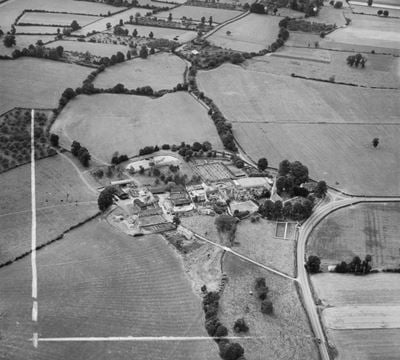
Standish
The hamlet, Standish, 1952
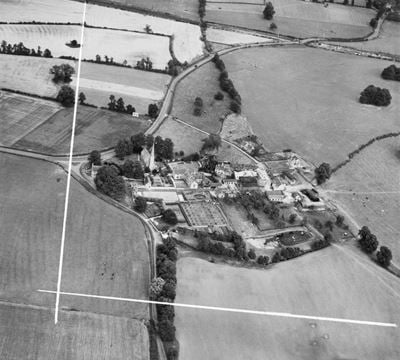
Standish
The hamlet, Standish, 1952
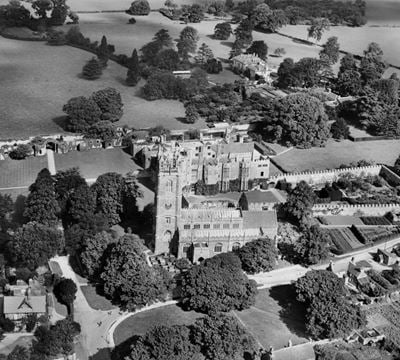
Thornbury
St Mary's Church and Thornbury Castle, Thornbury, 1928

Thornbury
Thornbury Castle, Thornbury, 1947

Ebrington
Ebrington Manor and St Eadburgha's Church, Ebrington, 1947
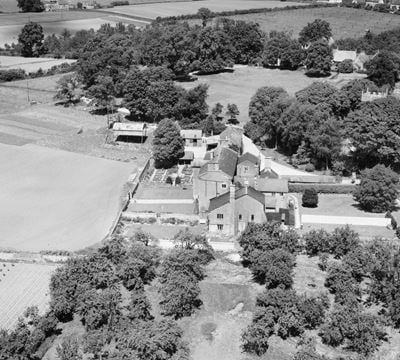
Ebrington
Ebrington Manor, Ebrington, 1947

Lightpill
Dudbridge Road and environs, Lightpill, 1947
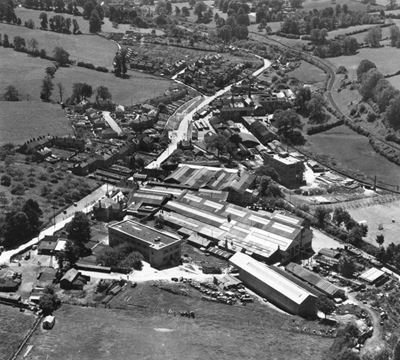
Lightpill
The Lightpill Iron Works, Lightpill Mills and environs, Lightpill, 1948
Gloucestershire in the Historic England Archive
The Historic England Archive cares for over 15 million images, dating from the 1850s to the present day. Discover stunning images of Gloucestershire's past. Skip this section and go to stories about heritage
Charles George Harper Collection
Cotswold, Gloucestershire
Date created: 1892 - 1933
The north entrance to the Sapperton Canal tunnel
Eric de Mare
Stroud, Gloucestershire
Date created: 1956
Exterior view of a Wool Mill at Nailsworth showing a window detail on the facade.
John Gay Collection: Modern Architects
Gloucester, Gloucestershire
Date created: 1970 - 1975
A view of a warehouse housing the VIVO AFD Value Centre in in Bristol Road, Gloucester
John Gay Collection: Rural Life
Cotswold, Gloucestershire
Date created: 1956
Mr James Ayliffe, landlord of the Trout Inn in Lechlade pouring a pint of beer from a wooden barrel from the Simonds Brewery of Reading
John Gay Collection: Miscellaneous
The Cotswolds
Date created: 1949 - 1951
A group of men despondently assess council house building work in the Cotswolds
John Gay Collection: Counties
South Gloucestershire
Date created: 1950 - 1955
Two small girls pushing a toy pushchair along the High Street in Badminton with the Old Vicarage visible in the background
John Laing Collection
South Gloucestershire
Date created: 25 Sep 1965
A shopping precinct at Yate Shopping Centre decorated with bunting for its official opening
London, Midland and Scottish Railway Company
Stroud, Gloucestershire
Date created: 1896
A view looking south-east along The Street towards the Tyndale Monument at the top of the hill
Alfred Newton and Sons
Stroud, Gloucestershire
Date created: 1896 - 1920
GENERAL VIEW SHOWING FOOTPATHS LEADING THROUGH WOODS
Nigel Temple Collection of Postcards of Parks and Gardens
Frenchay, South Gloucestershire
Date created: 1900 - 1910
GENERAL VIEW LOOKING TOWARDS THE HOUSE
Walter Scott
Bibury, Cotswold, Gloucestershire
Date created: 1946
A photographic copy of an image of Arlington Row in the village of Bibury
John Laing Collection
South Gloucestershire
Date created: 20 Oct 1965
The sculpture and fountain in Four Seasons Square at Yate Shopping Centre
Stories about heritage in your local area
Historic England publishes news, blogs, research, videos, and podcasts celebrating England's rich heritage. Discover the stories we have about Gloucestershire. Skip this section and go to education
10 Lesser Known Places Linked to King Henry VIII
Mentions Acton Court, and Gateway and Flank Walls 40M East
Discover the lesser-known historic sites linked to Henry VIII, including Whitehall Palace, Windsor Castle, Rievaulx Abbey, and Eltham Palace, London.
What Happened After the End of Roman Rule in Britain?
Mentions Long barrow and Roman amphitheatre and cemetery, Chedworth Roman villa
After the fall of the Roman Empire in Britain around AD 410, many towns declined, industries ceased, and the Roman army left England's shores.
The Life and Works of Visionary Engineer Isambard Kingdom Brunel
Mentions Clifton Suspension Bridge, Temple Meads Station, Great Western Dry Dock
Discover the bridges, structures and ships that Isambard Kingdom Brunel designed, including the Great Western Railway and Clifton Suspension Bridge.
The Rise and Fall of Anne Boleyn in 12 Historic Places
Mentions Sudeley Castle, Winchcombe Abbey
Discover the locations where Anne Boleyn lived, including Hever Castle, the Tower of London, and Hampton Court Palace.
10 Places with Coal Mining History
Mentions Old Furnace Level at Hopewell Colliery
Evidence of England’s coal mining heritage can still be found nationwide.
8 Sites of Scientific Discovery and Innovation
Mentions Jenner Hut, in Garden of the Chantry, The Chantry
From Charles Darwin to Alan Turing, discover incredible places in England connected to scientific achievement.
7 Serene Cemeteries to Visit in England
Mentions Arnos Vale Cemetery, Chhatri containing the tomb of Rammohun Roy
These graveyards can offer space for quiet reflection or a peaceful walk.
5 Art Nouveau Buildings in England
Mentions Former Everard's Printing Works
Explore some of England’s beautiful Art Nouveau buildings featuring flowing lines and floral designs.
6 Historic Places That Inspired Tolkien’s Lord of the Rings
Mentions Bell Inn, Parish Church of St Edward
Catch a glimpse of Middle-Earth at these listed historical sites in England.
What Are Hulks?
Mentions A Kennet built-barge known as HARRIETT, 500m north-west of Kingshill Farm
Discover some of the abandoned ships that line England’s coast and rivers.
6 Inspirational Women Engineers from History
Mentions Clifton Suspension Bridge
These pioneering women led the way in making engineering a career choice for all women.
What Is the Oldest Pub or Inn in England?
Mentions New Inn, Cathedral Church of the Holy and Indivisible Trinity
Many pubs and inns claim to be the oldest pub in England. Here are the facts.
Mentions Gloucestershire
Join Emma Barnett and Science & Discovery category judge Professor Lord Robert Winston as we continue our journey through the history of science and...
Cholera, smallpox & immunology
Join Emma Barnett and Science & Discovery category judge Professor Lord Robert Winston as we continue our journey through the history of science and discovery in England. From a little hut in Gloucestershire, to a water pump in the heart of London, explore why ten places have been chosen from hundreds of your nominations. Nominate a place at http://HistoricEngland.org.uk/100Places | A History of England in 100 Places is a Historic England podcast, sponsored by specialist insurer Ecclesiastical http://ecclesiastical.com | Take part in our listener survey at bit.ly/2Bxc2sG
Grade I Listed Gloucester Townhouse Restored
Mentions Old Judges House
Repairs to the Grade I listed 26 Westgate Street in Gloucester have been completed, aided by a £314,163 grant from Historic England.
One of England's Earliest Quaker Burial Grounds Listed at Grade II
Mentions Quaker Burial Ground Walls, Gloucestershire
The 17th century burial ground at Lower Hazel, South Gloucestershire, has been recognised for its architectural and historic importance.
Mapping the Palaeolithic in England
Mentions Gloucestershire
Developing a GIS resource to help map the potential for Palaeolithic period archaeology in England.
Planting Trees for the Future Whilst Protecting the Past
Mentions Gloucestershire
Developing new datasets to ensure that the right tree is planted in the right place.
From Pixels to Pasts: Uncovering the Value of Shipwrecks Through Social Media
Mentions Gloucestershire
A new study examines how social media platforms can illuminate the social values of shipwreck heritage.
The Fleece Hotel, Westgate Street, Gloucester
Mentions The Fleece Hotel, The Fleece Hotel (Part), New Inn
Researching a historic inn to support its conservation and reuse.
30 New Projects Explore England’s Rural and CoastalWorking-Class Heritage
Mentions Gloucestershire
Funded by Historic England's Everyday Heritage grants programme, these projects will explore untold stories and celebrate the heart of our history.
17 Remarkable Historic Places Listed in 2024
Mentions Broadmead Baptist Church, Fingerpost at junction of B4077 and Church Lane, Teddington Hands Sign Post
Celebrating 17 historic gems that were examined, protected and added to the National Heritage List for England in 2024.
Research Reports Roundup to February 2024
Mentions Gloucestershire
A roundup of new additions to the Historic England Research Reports database and a longer term overview of industrial heritage reports.
Malt Kilns and Malthouses
Mentions Malt House and Boundary Wall With Seymour House Hotel, Gloucestershire
A new book tells the important story of how maltings evolved in England and looks at their future use.
Southend-on-Sea Civic Fountain Listed
Mentions Cathedral Church of SS Peter and Paul
The Civic Fountain in Southend-on-Sea, Essex, has been listed at Grade II by DCMS on the advice of Historic England.
Grant Awarded for Emergency Repairs to Jacobs Wells Baths in Bristol
Mentions Hotwells Public Baths
A Historic England grant of £56,895 has been awarded to support emergency works to Grade II listed Jacobs Wells Baths in Hotwells, Bristol.
Gloucestershire's social history through photos
Over 10,000 images from the Historic England Archive have been specially selected and re-captioned for teachers, students, and anyone who wants to learn more about their local area. Skip this section and go to grant-aided places
Ye Sygne of St John Baptist Head', Lechlade, Gloucestershire
Period: Medieval (Middle Ages) (1066 - 1484)
This inn was originally an almshouse and hospital. It was founded in c1229. It was built to care for the workmen building St. John's Bridge.
Ye Sygne of St John Baptist Head', Lechlade, Gloucestershire
Wynnstay House, Cheltenham, Gloucestershire
Period: Georgian (1714 - 1836)
This is the oldest surviving specially designed Infant School built according to the most up to date ideas of the time. It was opened on 20 July 1830.
Wynnstay House, Cheltenham, Gloucestershire
Workhouse, now Northleach Hospital, Gloucestershire
Period: Victorian (1837 - 1901)
Accommodation in workhouses was provided for men and women in separate blocks.
Workhouse, now Northleach Hospital, Gloucestershire
Wool Barn, Manor Farm, Frampton on Severn, Gloucestershire
Period: Tudor (1485 - 1602)
The Wool Barn of Manor Farm on the Frampton Court Estate was constructed between 1550 and 1585 and is used today to store wool.
Windmill, Frampton Cotterell, South Gloucestershire
Period: Georgian (1714 - 1836)
These are the remains of a tower mill dating to the late 18th/early 19th century.
Windmill, Frampton Cotterell, South Gloucestershire
William Jones' Almshouses, Newland, Gloucestershire
Period: Stuart (1603 - 1713)
These almshouses were built in 1615.
William Jones' Almshouses, Newland, Gloucestershire
Whitbread Flowers Brewery, Henrietta Street, Cheltenham, Gloucestershire
Period: 1990s (1990 - 1999)
Founded in 1760 when it was known as Gardner's Brewery, the company was registered as The Cheltenham Original Brewery in 1888 and became Whitbread...
Whitbread Flowers Brewery, Henrietta Street, Cheltenham, Gloucestershire
Westington Quarry, Westington, Chipping Campden, Gloucestershire
Period: Victorian (1837 - 1901)
Five of the quarrymen are standing posed at the entrance to the quarry, one on the trolley which carries stone from the quarry.
Westington Quarry, Westington, Chipping Campden, Gloucestershire
Visit grant-aided places near you
These places and buildings have been helped by Historic England's financial grants. Find historic places in your neighbourhood that you never knew existed! Please note that opening times may vary. Skip this section and go to related locations
Cabot Tower, Brandon Hill
This stone tower features stairs leading to the top, offering unique views and access.
Tortworth Court, Wotton-under-Edge
Tortworth Lake is known for its scenic circuit walk and a stunning display of snowdrops in February.
Woodchester Mansion, Nympsfield
An unfinished Neo-Gothic mansion, listed as Grade I, was built between 1857 and 1867.
Discover more
Ready for more local heritage? Take a look at these other places nearby
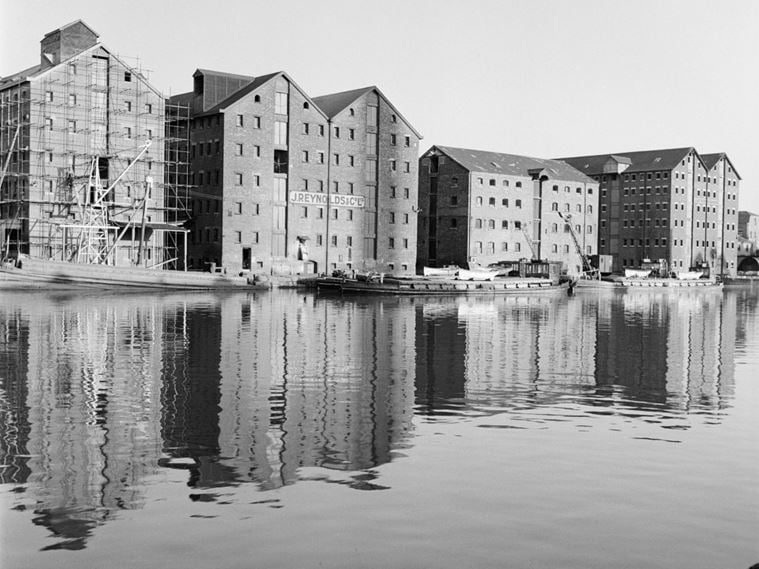
Gloucester
Local Authority District
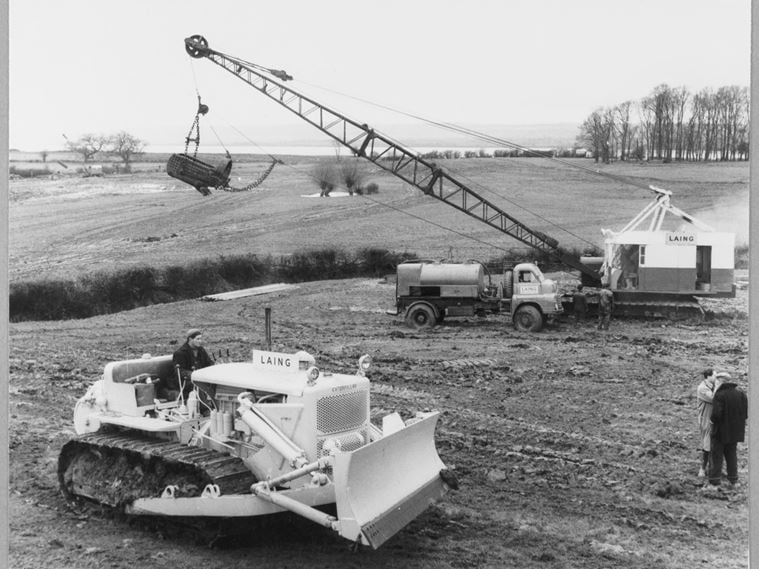
Stroud
Local Authority District
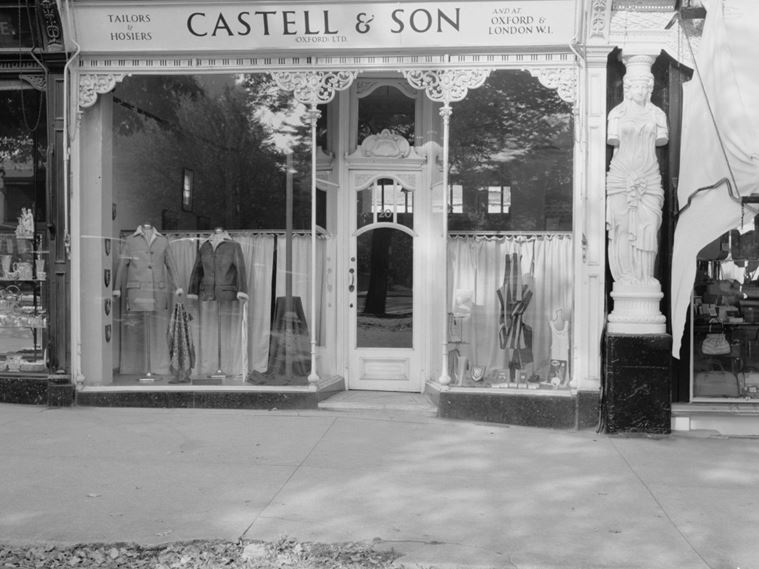
Cheltenham
Local Authority District